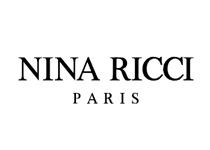Nina Ricci
Accessories / Apparel / Bags / Shoes
The house of Nina Ricci was founded by Turin-born Maria “Nina” Ricci and her son Robert in Paris in 1932. The brand rapidly expanded over the next few decades, thanks to its refined, romantic, and ...
The house of Nina Ricci was founded by Turin-born Maria “Nina” Ricci and her son Robert in Paris in 1932. The brand rapidly expanded over the next few decades, thanks to its refined, romantic, and always feminine aesthetic. In 1948, Robert created a bit of beauty history by introducing the now-iconic L’Air du Temps fragrance, which continues to be a top seller today (in 2008 the house launched a limited-edition run of the fragrance for the 60th anniversary). At one point, the house reached such notoriety that Andy Warhol designed its window displays, and in January 1998, the Puig Group officially bought the company. The design direction has changed hands several times over the years; Belgian-born Olivier Theyskens joined as creative director in 2006, and his collections won ardent praise by fashion critics for his ability to channel the house’s airy romance through chiffon layers and jeweled accents, consistently creating glamour with a Parisienne-punk edge. Puig head Mario Grauso let Theyskens go after the fall 2009 season, hiring former Louis Vuitton designer Peter Copping to take the reigns.Brand Details
Founder
Robert Ricci
Designer
Peter Copping
from
2009to
2014Guillaume Henry
from
2015to
March 2018Rushemy Botter and Lisi Herrebrugh
from
August 2018to
January 2022Harris Reed
from
September 2022to
PresentBrand Strategy
Market segment
Luxury
Core business
Apparel
Targets
Women
Nina Ricci Latest News
Nina Ricci Releases a New Fragrance
Under the reign of creative director Harris Reed, Nina Ricci refreshes its fragrance division by launching Vénus, a new perfume after 18 years.
HARRIS REED TAKES THE HELM AT NINA RICCI
Following Rushemy Botter and Lisi Herrebrugh's resignation from the Puig-owned French fashion label Nina Ricci earlier this year, Harris Reed has been named creative director.
Maje has a new CEO
Nina Ricci's Charlotte Tasset Ferrec is the new CEO of SMCP's Maje
Nina Ricci Financial Report 2024
Last fiscal year ended on December 31, 2016

